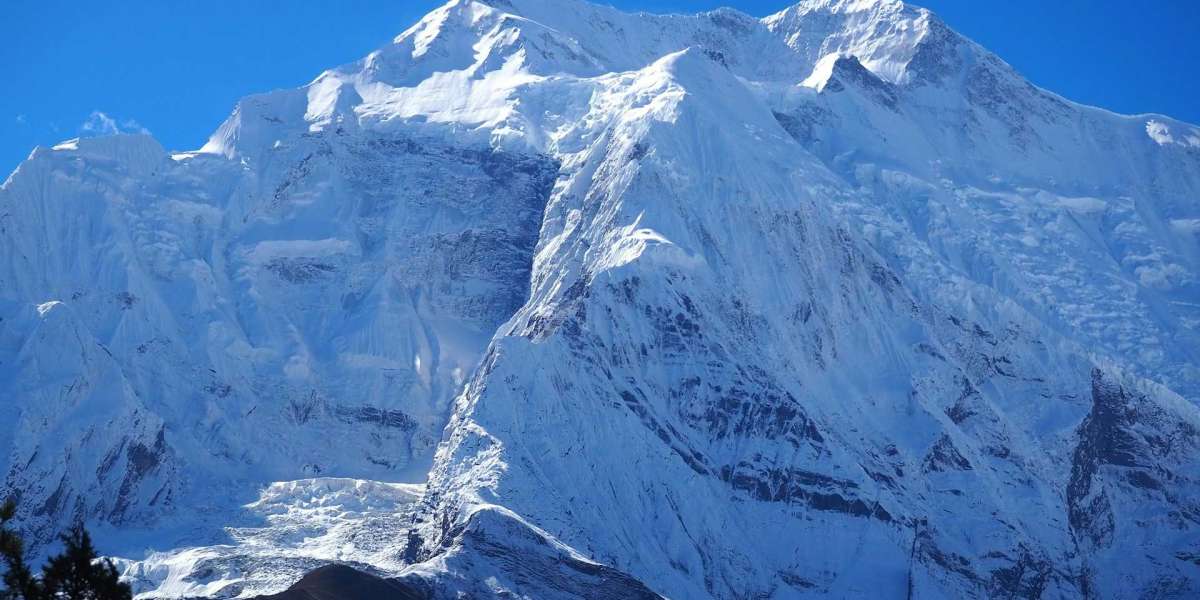Pisang Peak, standing at 6,091 meters (19,984 feet), is one of the most popular climbing peaks in the Annapurna region of Nepal. Known for its stunning views and challenging ascent, it offers a perfect introduction to high-altitude mountaineering. My journey to the summit of Pisang Peak was a mix of adrenaline, awe, and personal growth. Here’s a detailed account of my experience, focusing on the climb, the breathtaking scenery, and the lessons learned along the way.
The Journey Begins: From Kathmandu to Pisang Village
The adventure started with a scenic drive from Kathmandu to Besisahar, followed by a trek through the lush landscapes of the Annapurna Circuit. The trail took me through charming villages, terraced fields, and dense forests, offering a glimpse into the rich culture and traditions of the local communities.
After several days of trekking, I reached Pisang Village, a picturesque settlement nestled at the foot of Pisang Peak. The village, with its traditional stone houses and prayer flags, provided a perfect base for acclimatization and preparation. The warm hospitality of the locals and the stunning views of the surrounding peaks set the tone for the climb ahead.
The Climb: A Test of Skill and Endurance
Pisang Peak is classified as a trekking peak, but it requires technical climbing skills, especially on the steep snow and ice sections. The climb is divided into two main sections: the ascent to High Camp and the final push to the summit.
Ascent to High Camp
From Pisang Village, we trekked to Pisang Peak Base Camp, situated at around 4,380 meters (14,370 feet). The trail was steep and rocky, requiring careful navigation. The thin air made every step a challenge, but the stunning views of Annapurna II, III, and IV kept me motivated.
From Base Camp, we continued to High Camp at approximately 5,400 meters (17,700 feet). The trail was more technical, involving steep ascents and rocky terrain. High Camp was a stark contrast to Base Camp, offering minimal shelter but unparalleled views of the surrounding peaks. As the sun set, the temperature dropped drastically, and we prepared for the early morning summit attempt.
Summit Push
We started the climb at around 2 a.m., guided by the light of our headlamps. The initial section involved traversing a rocky ridge, followed by a steep snow slope. Roped up and using crampons, we made our way up the icy terrain. The final section included a near-vertical ice wall, which required careful use of ice axes and jumar devices.
Reaching the summit was an indescribable feeling. The first rays of sunlight illuminated the surrounding peaks, including Annapurna, Gangapurna, and Tilicho Peak. The sense of accomplishment, combined with the breathtaking panorama, made every ounce of effort worthwhile.
Key Highlights of the Climb
Panoramic Views
The summit of Pisang Peak offers one of the most spectacular views in the Annapurna region. From the top, I could see Annapurna II, III, and IV, Gangapurna, Tilicho Peak, and countless other peaks. The Manang Valley stretched out below, a reminder of the raw power of nature.
Technical Challenge
Pisang Peak is an excellent introduction to high-altitude mountaineering. The combination of rocky terrain, steep snow slopes, and ice walls provides a thrilling challenge for climbers. It’s a great way to build skills for more technical peaks in the future.
Cultural Experience
The climb also offered a chance to immerse myself in the local culture. The support team, comprised of experienced Sherpa climbers, shared stories of their mountaineering adventures and taught me about their traditions and way of life.
Lessons Learned
Climbing Pisang Peak taught me the importance of preparation, teamwork, and perseverance. The thin air and challenging terrain pushed me to my limits, but the support of the team and the beauty of the Himalayas kept me going. It was a humbling reminder of the power of nature and the resilience of the human spirit.
Conclusion: A Dream Realized
Pisang Peak is more than just a climb; it’s an adventure that tests your limits and rewards you with unforgettable memories. From the technical challenges to the awe-inspiring views, every moment of the journey was worth it. If you’re looking to take your trekking experience to the next level, Pisang Peak is the perfect choice.
So, gear up, train hard, and get ready to conquer Pisang Peak. The mountains are waiting, and the adventure of a lifetime awaits!








